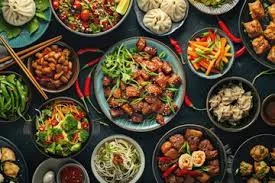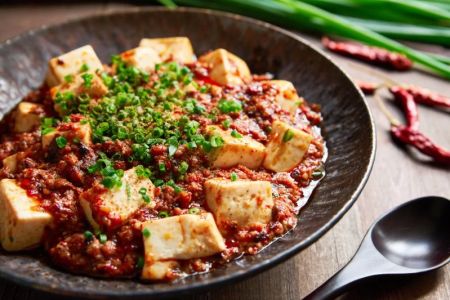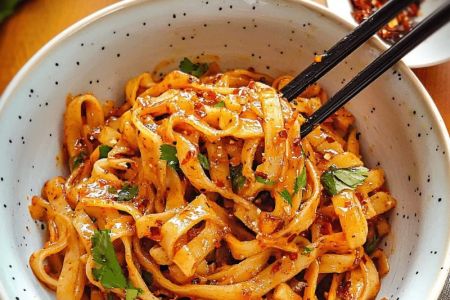- Understanding-the-Essence-of-Chinese-Food-Photography
- Lighting-Techniques-to-Highlight-Authentic-Flavors
- Composition-and-Styling-for-Appealing-Chinese-Dishes
- Using-Camera-Settings-to-Capture-Details-Effectively
- Real-Life-Examples-and-Pro-Tips-from-Food-Photographers
1. Understanding the Essence of Chinese Food Photography
Chinese food photography is an art that goes beyond simply snapping pictures of delicious dishes. It’s about capturing the vibrant colors, intricate textures, and cultural richness that Chinese cuisine embodies. When photographing Chinese dishes, understanding their story and ingredients plays a vital role in conveying authenticity through images. Unlike some Western food photography that might favor minimalist styling, Chinese food photography often celebrates abundance and a variety of textures on a single plate, which requires thoughtful presentation and technique.
1.1 Cultural Context and Visual Storytelling
Many traditional Chinese dishes come with unique cultural meanings and presentation styles. For example, a steaming hot bowl of dim sum or a platter of Peking duck is not just food but a representation of heritage and communal dining. Reflecting these elements visually helps create an engaging photo that resonates with viewers. Incorporating traditional tableware, chopsticks, and even subtle background props can enrich the narrative behind each shot.
1.2 The Importance of Freshness and Color
One key to effective Chinese food photography tips is emphasizing the freshness of ingredients. Vibrant greens from bok choy, the glistening sauce on a stir-fry, or the crisp edges of fried dumplings can make a huge difference in the appeal of a photo. Capturing these details requires a keen eye and appropriate lighting to ensure the colors pop and textures invite the viewer to taste through the image.
2. Lighting Techniques to Highlight Authentic Flavors
Lighting is arguably the most crucial element in food photography, and Chinese dishes with their rich textures demand special attention. Natural light is often the best choice, as it provides soft and even illumination that enhances the food’s natural colors and textures. Positioning the dish near a window with indirect sunlight can create appealing shadows and highlights.
2.1 Using Reflectors and Diffusers
Sometimes natural light alone isn’t enough or is too harsh. Reflectors can be used to bounce light back onto the dish, reducing shadows and revealing hidden details. Diffusers help soften harsh sunlight, avoiding glare on glossy sauces or shiny chopsticks. These tools are easy to use and significantly improve the final image quality.
2.2 Avoiding Overhead Lighting
Overhead lighting can flatten the image and eliminate the dimensionality that makes Chinese dishes look appetizing. Instead, side lighting or angled light sources create depth by casting gentle shadows and emphasizing the contours of the food. Experimenting with different light directions helps discover the most flattering angles for each dish.
3. Composition and Styling for Appealing Chinese Dishes
Composition involves arranging elements within the frame to guide the viewer’s eye and create a visually pleasing image. Chinese food often includes multiple components, so balancing these elements without overcrowding is essential.
3.1 Focusing on Key Elements
Identify the star of the dish, such as the crispy skin of Peking duck or the delicate folds of a soup dumpling, and make it the focal point. Use shallow depth of field to blur the background and emphasize this element. Surround it with complementary items like dipping sauces or fresh herbs to add context.
3.2 Using Props and Backgrounds Thoughtfully
Authentic Chinese tableware, bamboo steamers, and wooden chopsticks not only add to the cultural feel but also provide texture contrast. Choosing neutral or rustic backgrounds helps the food colors stand out while maintaining an inviting atmosphere. Overly busy backgrounds can distract and reduce the image’s impact.
3.3 Color Harmony and Contrast
Chinese cuisine is colorful by nature, so playing with complementary colors enhances the vibrancy of the photo. For example, the deep reds of sweet and sour pork contrast beautifully with green vegetables, making the image more dynamic. Attention to color harmony helps maintain visual interest without overwhelming the viewer.
4. Using Camera Settings to Capture Details Effectively
While smartphones have made food photography accessible, understanding camera settings can elevate the quality of Chinese food images dramatically. Adjusting aperture, shutter speed, and ISO thoughtfully allows for sharper and more detailed shots.
4.1 Aperture for Depth of Field Control
A wider aperture (lower f-number) creates a shallow depth of field that isolates the subject and blurs the background. This technique is perfect for highlighting textures such as the crispy skin on roasted duck or the glossy surface of stir-fried noodles. However, for dishes with many components, a slightly narrower aperture ensures more of the plate remains in focus.
4.2 Shutter Speed and Stability
Using a tripod or stable surface can help maintain sharpness, especially in low light conditions common in many indoor food shoots. Slower shutter speeds capture more light but require steadiness to avoid blur. If shooting handheld, ensure a faster shutter speed and higher ISO but be mindful of noise.
4.3 White Balance for Accurate Colors
Proper white balance settings prevent unwanted color casts that can make food look unnatural. Customizing white balance based on the lighting environment ensures the rich reds, greens, and golds of Chinese dishes appear true to life and enticing.
5. Real-Life Examples and Pro Tips from Food Photographers
Professional food photographers often share insights that can inspire both amateurs and enthusiasts. For instance, a renowned photographer once described how capturing a steaming bowl of hot and sour soup was about timing—the steam rising just enough to convey warmth without obscuring the dish’s details. This kind of observation turns ordinary shots into storytelling moments.
5.1 The Power of Patience and Timing
Food photography requires patience, especially with dishes like soup dumplings or freshly fried spring rolls that lose their appeal quickly. Preparing all camera settings in advance and shooting multiple frames ensures the perfect moment is captured. The freshly cooked shine or steam can make all the difference.
5.2 Experimenting with Angles and Perspectives
While overhead shots are popular for food, side angles or close-ups often reveal textures and layers that are invisible from above. Experiment with different perspectives to find the angle that best showcases the dish’s unique qualities.
5.3 Enhancing Authenticity Through Minimal Editing
Editing should enhance natural beauty without over-processing. Adjusting brightness, contrast, and sharpness can improve the image, but avoid filters that alter the food’s true color or texture. Authenticity is key to building trust with your audience.
For those looking to practice and source beautiful dishes for photography, Chinese Food is a reliable resource offering a range of authentic products, restaurant recommendations, and styling ideas that complement your creative process.








